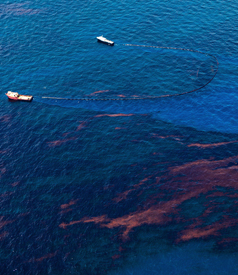Washington – Government scientists wanted to tell Americans early on how bad the BP oil spill could be, but the White House denied their request to make the worst-case scenarios public, a report by staff for the national panel investigating the spill said Wednesday.
The allegation by unnamed government officials, contained in a staff working paper released Wednesday by the National Commission on the BP Deepwater Horizon Oil Spill and Offshore Drilling, is certain to fuel controversy over why the government lowballed flow rates throughout much of the spill, even as independent scientists offered vastly higher — and ultimately more accurate — estimates.
The staff paper does not assign any motive to the administration’s moves but says the underestimating of flow rates “undermined public confidence in the federal government’s response” by creating the impression the government was either incompetent or untrustworthy. The paper said that the loss of trust “fuels public fears.”
Do you like this? Click here to get Truthout stories sent to your inbox every day – free.
BP initially put the spill at 1,000 barrels a day, but never disclosed any data or explained how it got that amount, the report said. In the second week of the spill, the Coast Guard said it could be as much as 5,000 barrels. That remained the government’s estimate until the end of May, even as independent scientists calculated that the rate was much higher.
The government all along had BP’s own estimates of what a worse-case scenario would be, but didn’t disclose it to the public, the report said. BP’s drilling permit put it at 162,000 barrels a day. On April 23 the Coast Guard and NOAA got an updated estimate of 64,000 to 110,000 barrels a day, but it’s unclear whether that information was from BP or how it was derived, the report said. By early May BP lowered its worst-case estimate to 60,000 barrels a day, the report said.
That figure was close to what government scientists later determined was the best estimate for the actual flow. Therefore, the government oil spill response team may have been basing their decision making on a good estimate, the report said. But, it added, “despite the fact that the Unified Command had this information relied on it for operations, and publicly stated that it was operating under a worst-case scenario, the government never disclosed what its operational scenario was.”
2 Days Left: All gifts to Truthout now matched!
From now until the end of the year, all donations to Truthout will be matched dollar for dollar! Thanks to a generous supporter, your one-time gift today will be matched immediately. As well, your monthly donation will be matched for the whole first year, doubling your impact.
We have just 2 days left to reach our goals: raising $48,000 in one-time gifts and adding 800 new monthly donors.
This matching gift comes at a critical time. Trump has made it no secret that he is planning a demolition-style attack on both specific communities and democracy as a whole, beginning on his first day in office.
Help us prepare for Trump’s Day One, and have your donation matched today!
